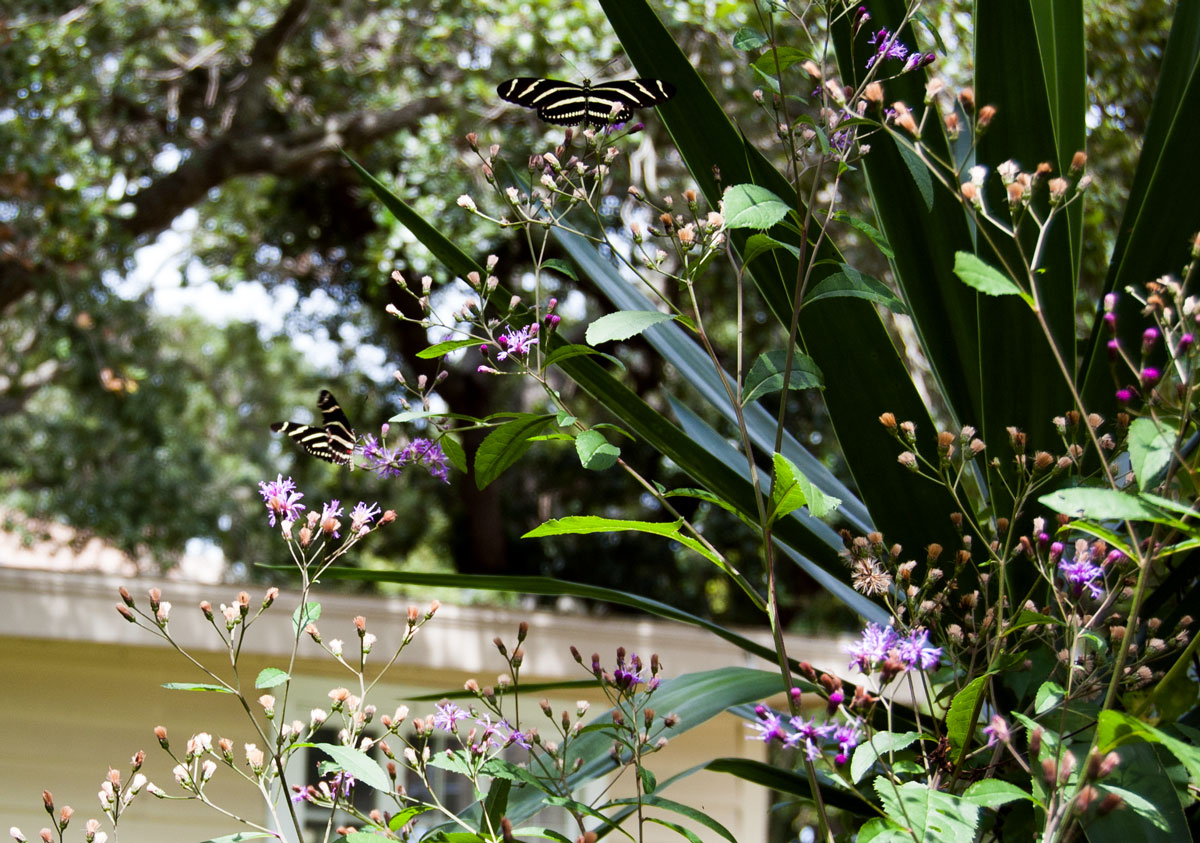Native Plants
Planting native species in your yard is a great way to save money and time, conserve water, and reduce the fertilizer and pesticides entering our local waterways.
Plants native to coastal Florida are hardy, drought tolerant, and grow well in our sandy soils. By landscaping with native species, you can greatly reduce the amount of food and water you must apply to maintain a healthy yard. There are many unique and beautiful native plants you can use to help minimize runoff from your yard into the local waterways.
Pay attention to the natural conditions and soil composition in your area, and research which plants naturally thrive in those conditions. See the link below to find species appropriate to your neighborhood.

Low Marsh
The low marsh is also known as the intertidal zone, and is usually flooded at high tide and exposed at low tide. Plants that do well in the low marsh are smooth cord grass (Spartina alterniflora), red mangroves (Rhizophora mangle), black mangroves (Avicennia germinans).
Mid Marsh
The mid marsh floods occasionally during extreme high tides or storm events, otherwise the soil is moist but never under water for long. A variety of grasses do well in the mid marsh area such as salt meadow cordgrass (Spartina patens), seashore paspalum (Paspalum vaginatum), and salt grass (Distichlis spicata). Succulents such as salt wort (Batis maritima), glass wort (Salicornia ambigua), and sea purslane (Sesuvium portulacastrum ) thrive in mid marsh habitats, and provide a salty edible crunch for the tops of salads or while urban foraging.
High marsh
The high marsh rarely floods and instead gathers water from rain events. Plants that live in the high marsh must be drought tolerant and salt tolerant, but also offer beautiful flowers and a larger variety than plants in the lower elevations. Species such as fire bush (Hamelia patens), seaside goldenrod (Solidago sempervirens), beauty berry (Callicarpa americana), and yaupon holly (llex vomitori) provide beautiful blooms and can be kept as shrubs. Indian blanket flower (Gaillardia pulchella), beach sunflower (Helianthus debilis), railroad vine (Ipomoea pes-caprae), and sunshine mimosa (Mimosa strigillosa) provide impressive ground cover and colorful flowers during the spring and summer months. These plants provide shoreline stabilization due to their large root systems that anchor and hold onto loose soils.


Our Mission:
"To protect our coastal ecosystems through education, conservation, and exploration"
